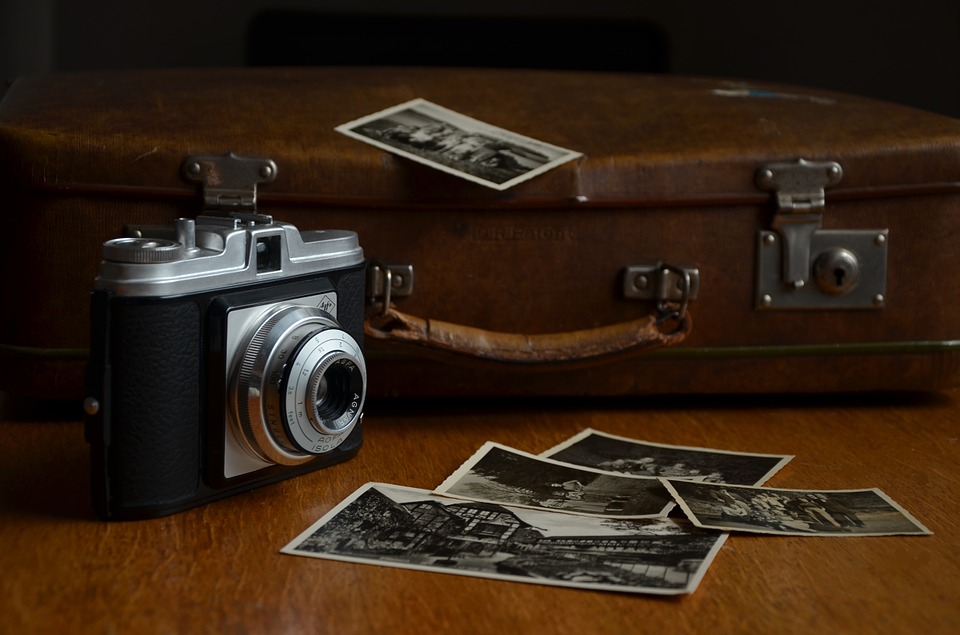By Amy Trotter
If you’re a graphic designer, you may think you’ve engaged a client with every essential aspect of your work because you have a portfolio of your work available online. If a potential client is interested in your work, they can just access your website and check out your work. However, even if your work is primarily digital, having a print portfolio can help enhance your digital presence, impress a new client, and show your versatility.
A Lasting Image
One disadvantage of having your work displayed exclusively on the internet is that it’s very easy for people to quickly click away from your site without examining it. There’s so much content online, that a potential client may have a dozen tabs open (even though they shouldn’t), scrolling through them so quickly that yours may get overlooked just because it’s simply another web page among many.
To truly distinguish your work, take your designs to the next level with print. When introducing a client to your work, you’ll want to dazzle them with a product they can hold in their hands and look at throughout the day. With design portfolios full of color and innovative artistic choices, allowing a potential client the opportunity and impetus to thoroughly examine your work is powerful.

Think Outside the Box
This idiomatic expression was used for years among graphic designers to promote using the internet as a medium for portfolios instead of physical advertising. In the past, the internet was the unusual, provocative platform. Now that nearly every successful business has a strong web presence—all cut from a similar template—classic methods are newly creative and revolutionary.
Having a print portfolio will show potential clients that you’re willing to think outside the box by using a combination of traditional and contemporary ideas to convey your message, your personality, and your work. Don’t underestimate the power of a tangible, physical portfolio.
Market Yourself as a Brand
As you design your print portfolio, be thoughtful of the layout and motifs. This is your chance to show your diverse talents across your body of work, and in the design elements of the portfolio. You want to show that you’re not only highly creative and can design a wide variety of projects, but that you can also put a unique, personalized stamp on all of your work. Establishing this personal voice and presence can be a matter of customizing the headers of your portfolio pages, creating a brand, or designing a logo.
Instead of simply writing your name, perhaps turn your name into a logo by considering the letters and shapes in your printed name to embody the tone of your work. Many clients desire a designer who can establish and maintain a specific brand identity for them, so showcasing your experience in branding is a big step in the direction of impressing your client.
A Portfolio Is About Showing Off
Don’t be tempted by modesty in your printed portfolio. Your ultimate goal is to make a strong impression on your potential clients, impossible to do if your portfolio design is too reserved. While a simple, sleek design can be impressive, you can also choose a bold, consistent color palate that excites you.
Most importantly, if your ideas excite you, your work will shine with effervescent energy. It’s difficult to create effective work when you’re not excited. Infuse your portfolio with things you love for construction that will astound.
Let the Work Speak for Itself
While including various explanations, labels, and progress demonstrations is intriguing, there’s only so much you can say about your own art or design concepts. The visual medium—whether in art, photography, or advertising—is about letting your images tell their own story. Don’t over-complicate your portfolio with text, allow the client to garner their own ideas about what your work means. If you’re a skilled designer, you’ll be able to pull the audience into your work and explain your concept with colors, shapes, and a few, sparse words.
Redefine Your Portfolio
A portfolio is essentially a platform for you to display your work. Though many portfolios look like a magazine or a page-bound document with color photographs, there are many variations you can make on this design. A portfolio can be a 3-dimensional box or it can unfold like a treasure map. When it comes to your options for a truly unique portfolio that will dazzle potential clients, your imagination is your only limitation.
Don’t Forsake Digital Media
Just because your print portfolio is a departure from the digital aspect of your work doesn’t mean you can’t include links or disks of your work. With this method you can provide a sample of your work, supplemented by a disk or thumb drive to show your digital capabilities. With an additional drive, you’ve provided the client with another collection they can keep and examine at their leisure.
Your Own Work
Regardless of how you decide to present your print portfolio, you want to ensure your materials are high quality. From the paper to the ink, you’ll need components compatible with a premium printer. If you choose to use a heavy cardstock base for your portfolio, consider using the Canon Pixma series with Canon ink cartridges—they have flexible paper handling, quality ink and pigment caliber, impressive ISO speed ratings, and can last for years without compromising quality.
Designing the perfect print portfolio entails many different aspects and considerations. However, when properly executed, it can garner the kind of attention any marketing client can expect in an ideal candidate, contributing to your chances of landing a new lead. Find a new client today and make the impression that you have always intended to make with a creatively designed print portfolio.
—
Amy Trotter is a professional graphic designer and a freelance writer from Ottawa, Canada. With over 10 years of experience in the design industry, she has worked with a variety of clients on a number of projects that include logo creation, web development, and product renderings. When she is not busy working or creating, she enjoys swimming and hiking.





